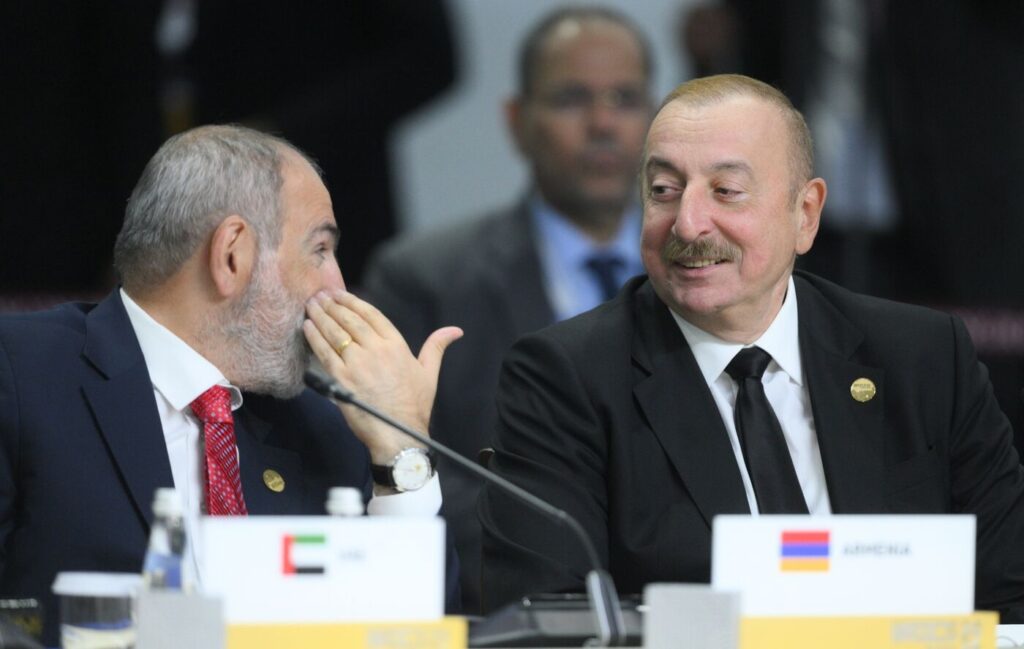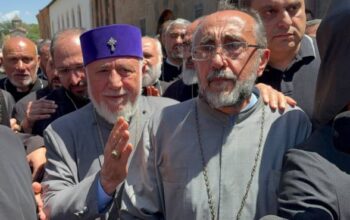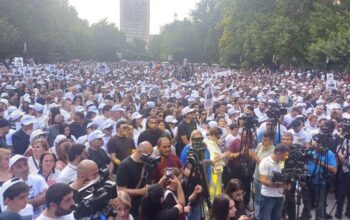By Harut Sassounian
After several years of intense, one-sided negotiations between Armenia and Azerbaijan, in March both countries announced they had finally agreed on all 17 points of the “Peace Treaty.” Pres. Ilham Aliyev proclaimed that Armenia had accepted every term Azerbaijan had dictated.
When Armenia requested Azerbaijan to schedule a signing ceremony, Baku declined. Given Prime Minister Nikol Pashinyan’s willingness to make further concessions, Aliyev postponed finalizing the treaty to extract additional demands.
Even when Pres. Trump invited Pres. Aliyev to the White House to sign the “Peace Treaty,” he refused. The document was merely initialed, rendering it non-binding.
On August 11, 2025, Armenia and Azerbaijan finally released the full text of the “Peace Treaty,” formally titled: “Agreement on Establishment of Peace and Inter-State Relations between the Republic of Armenia and the Republic of Azerbaijan.”
How can Armenia agree to sign a “Peace Treaty” when:
1) Azeri troops have occupied parts of Republic of Armenia’s territory since 2021.
2) Azerbaijan is holding Armenian hostages in a Baku prison.
3) 120,000 displaced Artsakh Armenians are denied return to their ancestral homeland.
The treaty’s promise of a “just, comprehensive, and lasting peace” sounds noble, but remains hollow. No one opposes peace when it is truly “just” and “lasting.” Yet, Aliyev’s continued threats show he covets Armenian land, not peace.
Let’s examine the 17 articles of the “Peace Treaty”:
Article 1: Armenia and Azerbaijan recognize the boundaries of their former Soviet republics. This validates the artificial boundaries imposed by the Soviet Union.
Article 2: The Parties confirm no future territorial claims and pledge not to support acts “aimed to dismember or impair” the other’s territorial integrity. This suppresses a future patriotic Armenian government’s pursuit of historical territorial demands for Western Armenia, Artsakh and Nakhichevan, and silences dissent.
Article 3: The Parties must prevent any third party from using their territory to attack the other. Yet Turkish military forces and Jihadist mercenaries remain in Azerbaijan.
Article 4: Both sides shall refrain from intervening in each other’s internal affairs. However, Azerbaijan demands Armenia amend its Constitution, return the purchased weapons, and expel the EU monitors.
Article 5: The two sides will establish diplomatic relations, implying the exchange of ambassadors. Even a minor incident involving Azerbaijan’s future ambassador in Yerevan could serve as a pretext for Baku to attack Armenia.
Article 6: A joint commission will delimit and demarcate the border. In case of a dispute, will Azerbaijan honor international arbitration?
Article 7: “The Parties shall not deploy along their mutual border forces of any third party.” Will Azerbaijan expel the Turkish troops and Jihadist mercenaries in its territory, while demanding that Armenia remove the EU monitors?
Article 8: The Parties “condemn and combat intolerance, racial hatred and discrimination, separatism, violent extremism and terrorism….” This clause could be used as a pretext for the Armenian government to suppress the activism of Artsakh Armenians and opposition groups.
Article 9: The Parties agree to search for missing persons during their past armed conflicts. This provision is commendable, if actually carried out.
Article 10: The Parties agree to cooperate in various fields. This is a benign commitment.
Article 11: The Parties are free to carry out their obligations with other UN members. This clause poses no risks.
Article 12: “The Parties…shall be guided by international law and this Agreement” and not “invoke the provisions of its internal legislation as justification for its failure to perform the present Agreement.” Why then does Azerbaijan demand Armenia change its Constitution?
Article 13: A bilateral Commission will be established to oversee implementation of this Agreement. Will Azerbaijan accept the Commission’s decisions?
Article 14: The Parties shall settle their disputes peacefully. If Azerbaijan refuses to comply with the decisions of the joint Commission or other international bodies, what recourse does Armenia have?
Article 15: The Parties shall withdraw their legal demands against each other from any international forum. This forfeits Armenia’s right to hold Azerbaijan accountable for war crimes.
Articles 16 and 17 are harmless.
Since this capitulating document was signed under duress, it is considered invalid under international law. Pashinyan is intentionally misrepresenting the “Peace Treaty” to convince the voters to return him to power in the 2026 parliamentary elections.
Possible next steps to reject Pashinyan’s and Aliyev’s plans:
1) Remove Pashinyan from office before he can sign the “peace” agreement.
2) If that fails, vote against the Azeri-dictated new Constitution of Armenia in the upcoming referendum, forcing Aliyev to reject the “Peace Treaty,” and Pashinyan to resign.
3) If the Pashinyan-controlled Constitutional Court and Parliament approve the “Peace Treaty,” Armenians still have the chance to reject it by voting against it in a referendum that Aliyev is insisting on to make sure that the people of Armenia, not just the government, is supporting this “Peace Treaty.”
4) Finally, Pashinyan should know that a future patriotic government will renounce the “Peace Treaty,” declaring it null and void, along with Trump’s Route.




